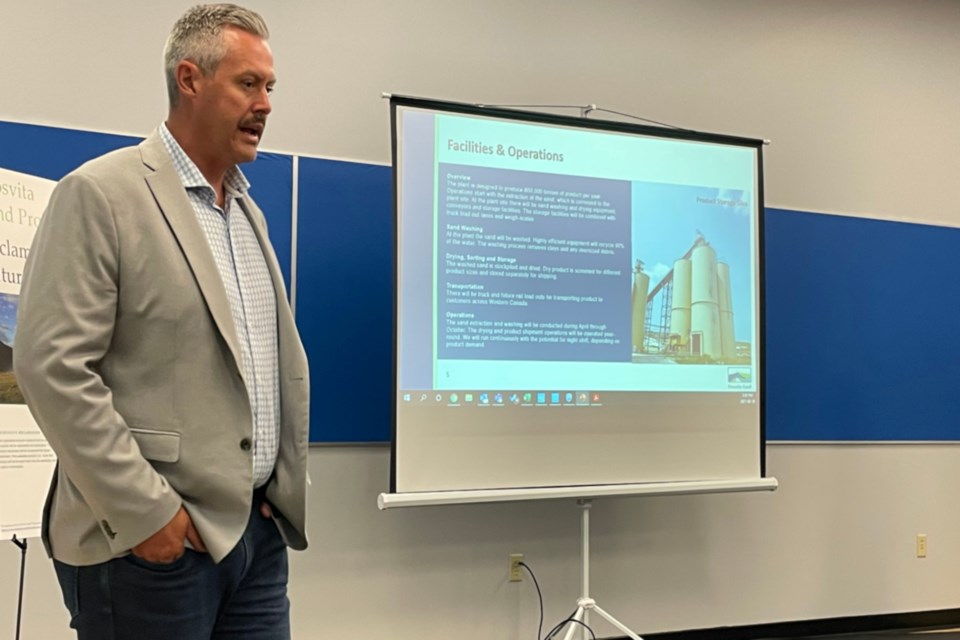ATHABASCA — It was December 2019 when Athabasca Minerals Inc. (AMI) made its first contact with the residents of the Athabasca region regarding a proposed sand mining operation southeast of town.
The open house Dec. 10 at the Athabasca Ag Society Agriplex about the White Rabbit project had between 200 and 250 people attending, but this time around the company is hosting more smaller sessions so concerns and questions can be addressed in a constructive way by AMI chief operating officer Dana Archibald and staff.
The first three sessions were held Aug. 10 at 3, 5 and 7 p.m. and three more mini open houses are scheduled Aug. 19 for the same time slots in the Multipurpose room at the Athabasca Regional Multiplex.
“One of the things that became quite apparent there was White Rabbit was likely not the right location, just because there was a lot of country residential around the area. We're seven kilometers away from the town about Athabasca and so what we did here, basically, in 2020, and 2021, is we started taking a look at other areas that might be more conducive for a facility,” said Archibald.
The company had always had an eye on accessing rail to help ship the sand and after some geological testing on land located directly south of Alberta Pacific Forestry Inc. (Al-Pac) they found the ideal location for the new Prosvita Sand Project.
“That was a real sort of positive for us,” he said. “There it’s an area that's zoned industrial, there's industrial users right beside us, and then there's potential (rail access).”
Archibald walked the seven residents at the 3 p.m. session through the mining and drying process noting no dust is created during mining, or washing as it’s called, because it’s done as a slurry and during storage the sand is never allowed to dry out before it’s taken inside to an enclosed drying area.
“When you're talking about silica dust, where you have your highest potential for it is when you're doing the drying," he said. “We actually have … a large vacuum cleaner that sucks the dust out of the air to make sure that we don't have any airborne dust in that process and then it goes from our dryer straight into the silos.”
Washing takes place April to October with drying happening as well, but from November to March, when the ground is too frozen to mine, only drying occurs.
“I spent a little bit of time down in the (United States) actually to take a look at some of the different operations down there after we heard some of the concerns here,” said Archibald. “We wanted to see some of these active operating sites and see what they were using for the dust collection.”
He also noted that the way sand is mined in the U.S. is not the same as what is proposed for the Prosvita project.
"Their mining is a little bit different down there,” he said. “Theirs is a consolidated material; it’s rock. So, they actually do drilling and blasting there; we're not that, we're an unconsolidated material.”
Archibald reaffirmed the commitment the company will need around 100 people during construction and 40 staff once the facility is up and running and even though the Prosvita site has less sand than White Rabbit, it will still be a 15-to-20-year project with reclamation of the land starting as soon as one part of the deposit is mined, which is done in stages.
He added the White Rabbit location is still being optioned – but it’s not being considered for development either – and encourages anyone with questions to attend an open house; more are being planned for September or October.
To sign up for one of the Aug. 19 sessions, e-mail AMI Silica’s director of corporate affairs Cheryl Grue at [email protected] and for updates follow the Prosvita Sand Project page on Facebook.



